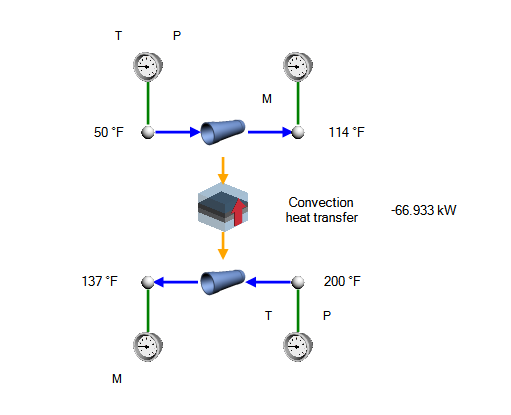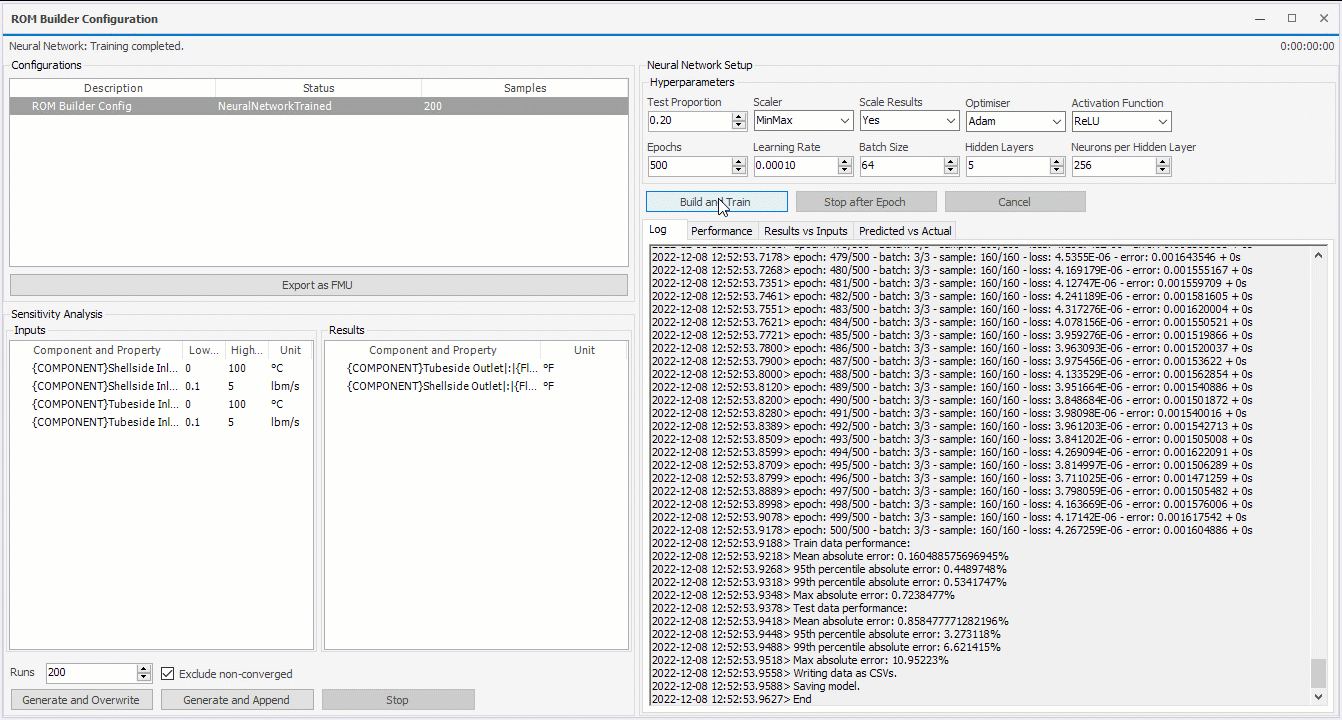In the 2022 Flownex release (8.14.0) a new feature has been added to create Reduced Order Models. Today I’ll go over the basics for creating a reduced order model and how this can be utilized.

To demonstrate this functionality I built a simple network representing a shell and tube heat exchanger. In this model we’ve got liquid water on both the hot and the cold side. For simplicities sake we’ll keep the conditions such that the phase is always liquid.

The ROM builder setup is found under the “Configuration” ribbon in Flownex.

To configure our Reduced Order Model we will want to create a configuration and then define our Inputs (independent variables) and our Results (dependent variables). We do this by dragging and dropping inputs and results into the ROM Builder Configuration Window. For this example the independent variables will be the hot and cold side inlet mass flow rates and temperatures.

We’ll notice there are three different statuses for the ROM configuration. “New”, “SensitivityAnalysisCompleted”, and “NeuralNetworkTrained”. To complete the sensitivity analysis portion we need to set bounds for our independent variables, enter the total number of runs, and then click “Generate and Overwrite”. If we already have started creating our ROM and we simply want to expand the dataset we may want to choose “Generate and Append”.

Flownex will then run the sensitivity analysis which will provide the dataset to train our neural network.

In the creation of the neural network there are a variety of “hyperparameters” which can be adjusted to change the complexity and depth of the model. In this example we will stick with the default values but you can read all about what each of these parameters does in Chapter 23 of the Flownex General User Manual. At this point we can click the button to Build and Train our neural network! In the top right of the ROM Builder window we can see the approximate time remaining.

There are a few graphs we can view in the different tabs to assess the accuracy of our model. I am particularly fond of the results – predicted vs actual. This gives us an understanding, at a glance, of the deviation in what the ROM predicts vs Flownex results.

The last step is to export this as a standalone Functional Mockup Unit (FMU) for use in either other Flownex networks or in another tool like Ansys Twinbuilder.
